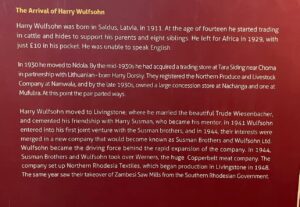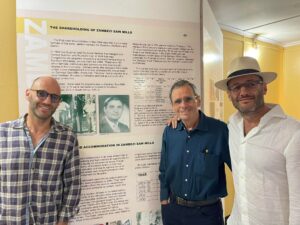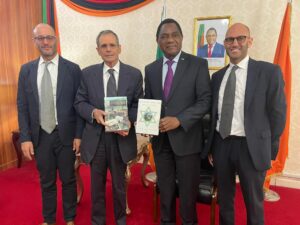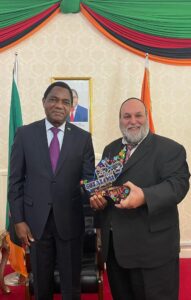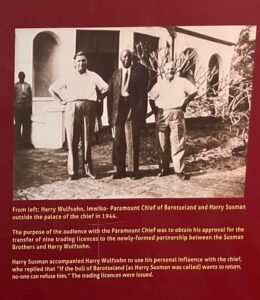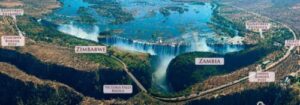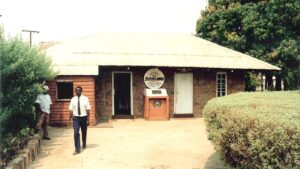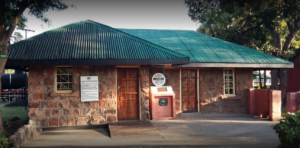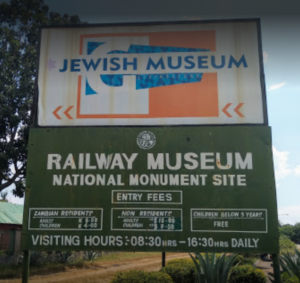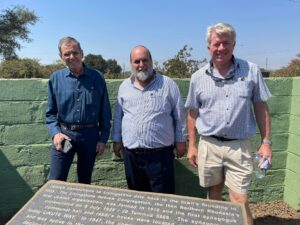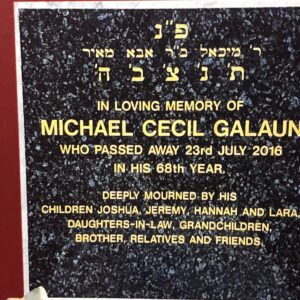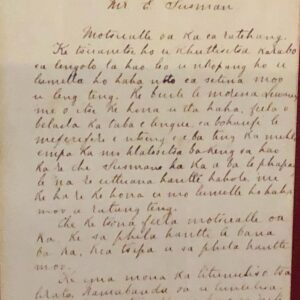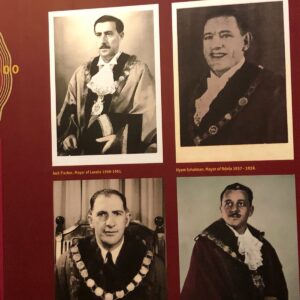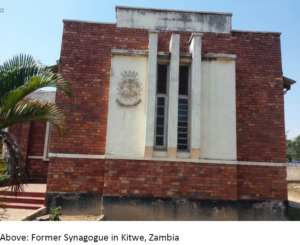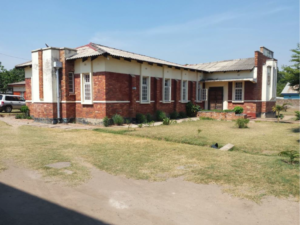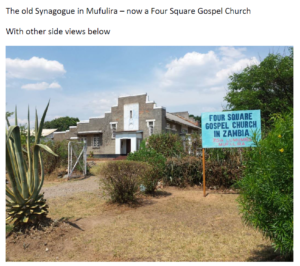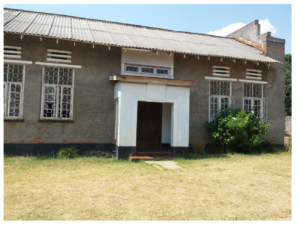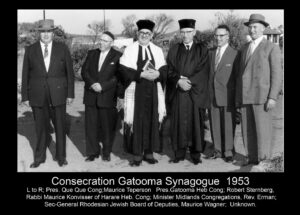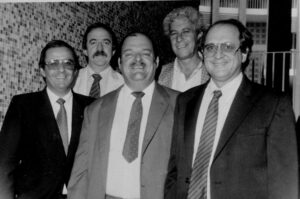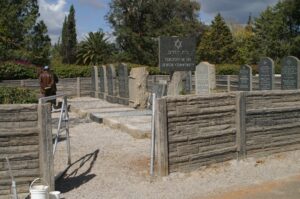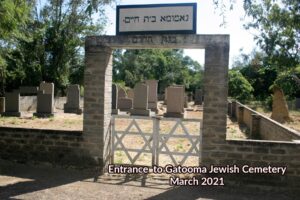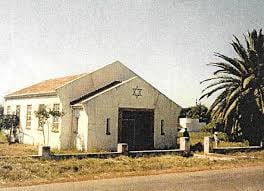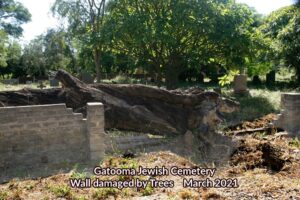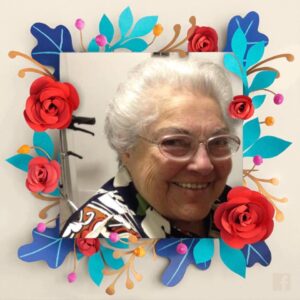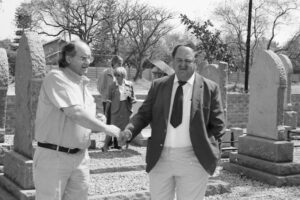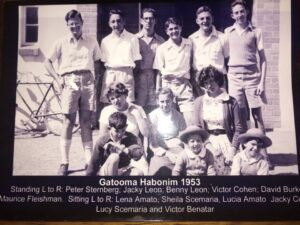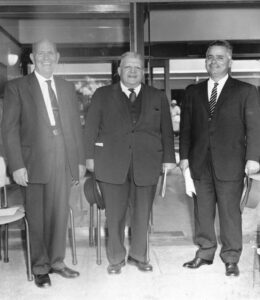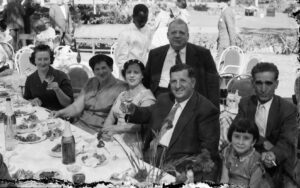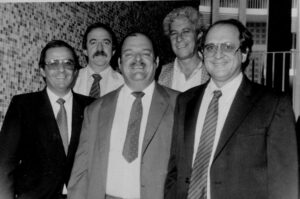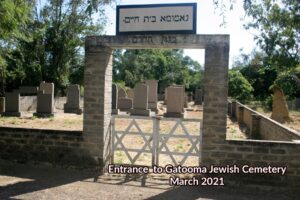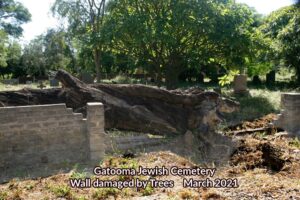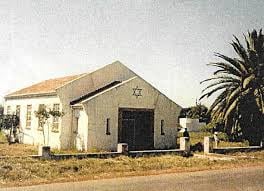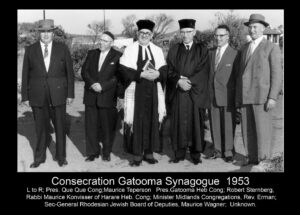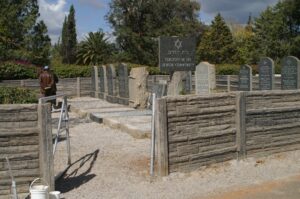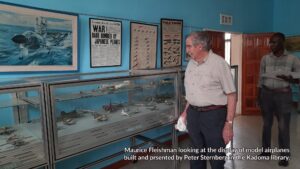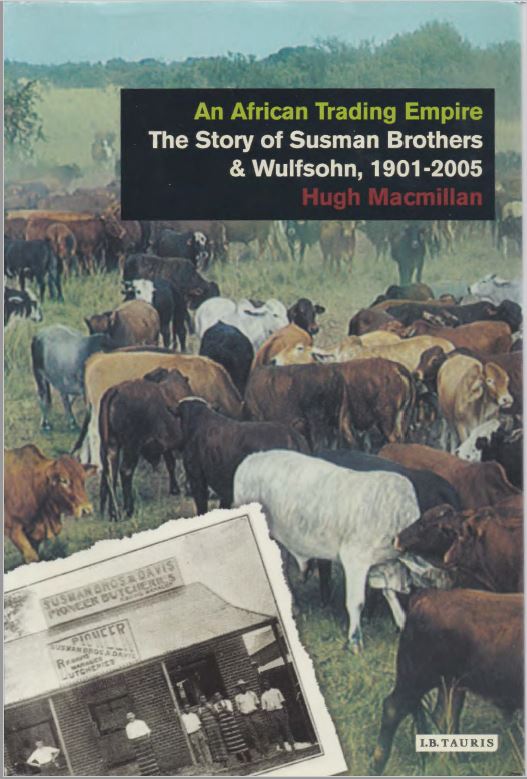
The Zambian Jewish community is affiliated with the African Jewish Congress (AJC), which is based in South Africa and advocates on behalf of the small and scattered communities of sub-Sahara Africa. It works to ensure that the Jewish community of Zambia has international representation, including within the WJC, despite the small size of its population. Between the country’s dwindling Jewish population and lack of central communal organs, there is little in the way of organized Jewish life in Zambia.There is also no local rabbi – the AJC’s “travelling rabbi,” Rabbi Moshe Silberhaft, serves as the de-facto rabbi of the community. Kosher food in Zambia is very scarce.
A separate page on this site covers the story of the Zambian Jewish Community which has been extensively researched and published in three books – “An African Trading Empire” by Hugh Macmillan, “Zion in Africa” by Hugh Macmillan and Frank Shapiro and as well as “Haven in Africa” by Frank Shapiro. For a detailed review and background on the Zambian Jewish Community through these books – click here.
To read an excerpt of the book “An African Trading Empire” click here. With thanks to Edwin Wulfsohn for agreeing to share this material with ZJC.
There is no active Jewish community in Zambia and the Lusaka Synagogue was sold several years ago.
Thanks also to Rabbi Moshe Silberhaft for several of the recent pictures from Zambia shown below.
There is a small Jewish Museum in Livingstone and you can see some images from that in a gallery below.
Other communities existed in Livingstone, Ndola and Kitwe as well Mazabuka but are no longer.
Visit the other pages under the Zambia menu of this website for biographies and stories of other small communities like those on the Copperbelt
You can see a number of Zambian photo galleries by photographer Jono David who has done extensive capturing of images from Jewish communities throughout Africa.
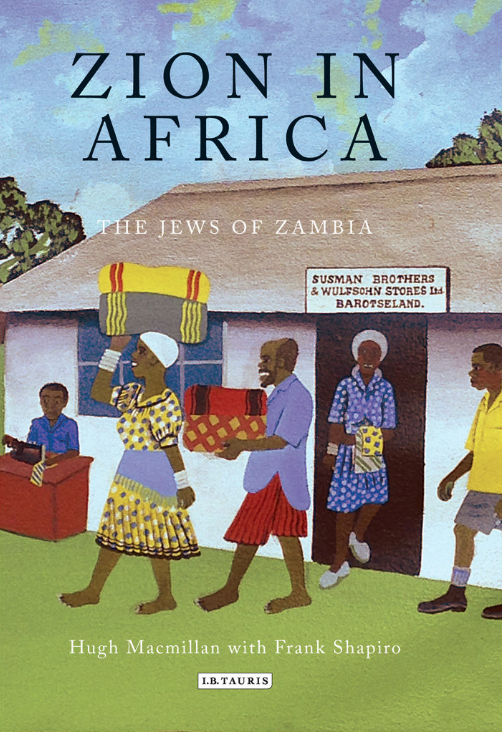
ZAMBIA (formerly Northern Rhodesia), Central African republic. The two earliest Jewish settlements in Northern Rhodesia were in Livingstone and Broken Hill. When the railway reached Victoria Falls in 1905, there were enough Jews in Livingstone to start a congregation.
By 1910, when the first Jewish wedding in Northern Rhodesia was celebrated, the congregation had 38 members. Jewish pioneers did much to open up the country, developing the cattle trade and ranching. Maurice Rabb, Harry Wulfsohn, Len Pinshow, Hanan Elkaim, and the Susman brothers, Elie and Harry, were just some of these Jewish immigrants whose enterprise and initiative laid the foundations of the modern-day Zambian economy.
The Susman Brothers, who arrived in 1900, were the first to develop large-scale wagon and river transport to Barotseland. Just before 1914, they pegged the Nkana copper mine but could not float a company to open it because the mine was in tsetse fly country. They sold their claim for £250 to what is now the largest copper mine in Zambia. Sir Edmund *Davis, Solly *Joel, and Sir Ernest *Oppenheimer were prominent in developing copper mining. Abe Galaun (1914–2003) arrived in Zambia just before the outbreak of World War II and became a dominant force in the country’s meat and dairy business to the extent that Zambian President Kenneth Kaunda dubbed him “the man who feeds the nation.”
Galaun was involved in a wide range of charitable enterprises and his extensive contribution to Jewish communal life included founding the Council for Zambia Jewry. In 1921, out of a total Jewish population of 110, 48 lived in Livingstone, 11 in Broken Hill, and 25 in Lusaka. In succeeding years the Jewish population grew slowly, increased mainly by refugees from Nazi Germany in the late 1930s.
As happened in neighboring Southern Rhodesia and the Belgian Congo, there was a substantial influx of Sephardi immigrants, largely from the Greek island of Rhodes. With the development of the copper mines in the north and the general growth in population and commerce, the Jewish population reached a peak of about 1,200 in the middle 1950s; most lived in Lusaka and the copperbelt centers of Kitwe, Ndola, Mufulira, Chingola, and Luanshya, in each of which there was a small but organized Jewish congregation.
After 1960 numbers declined. In 1968, the estimated figure was 500, excluding some 200 on short-term contracts with Solel Boneh (the construction company of the Israel labor federation) and other overseas enterprises. Younger people tended to leave, and most of the older school-age groups were sent to Rhodesia or South Africa for their education. In communal and Zionist affairs Zambian Jewry remained linked until the late 1960s with the Central African Jewish Board of Deputies and Zionist Organization. Thereafter, the Council for Zambia Jewry, after 1993 through its affiliation to the *African Jewish Congress, oversaw the community’s affairs.
Before Zambia’s independence in 1964 Jews played an active role in local government. Jewish mayors served in Livingstone, Broken Hill, Kitwe, and Luanshya. In the political field Sir Roy *Welensky was the leading figure in Northern Rhodesian politics from the 1930s until the Federation was set up in 1953, when he moved to *Salisbury (today Harare) as deputy prime minister; M.G. Rabb was a member of the legislative assembly from 1959 to 1962, and S.W. *Magnus was a member of parliament from 1962 to 1968, when he resigned to become a judge of the high court. As happened in South Africa, some Zambian Jews were active in resistance politics on behalf of the disempowered black majority in the pre-independence era. Most noteworthy of these was Lithuanian-born Simon Zukas, who played an important part in Zambia’s independence struggle in the postwar era and in 1952 was in fact exiled on this account by the colonial government.
Zukas returned to Lusaka after 1962 and later served as agriculture minister in President Frederick Chiluba’s first cabinet (1991). A number of South African Jews who were prominently involved in the struggle against apartheid in their home country, amongst them Joe *Slovo, Ronnie *Kasrils, and Ray Alexander, were based in Lusaka for the greater part of their years in exile before returning to South Africa after 1990. The Zambian Jewish community steadily dwindled in the post-independence era. About 50 Jews remained in 2004, most of them living in Lusaka. Zambian Jewry in the early 2000s comprised a small core of long-term “settlers” and more transient residents engaged in trade, commerce, agriculture, and the professions. The community comes together for religious services on the High Holidays and Passover, as well as for Israel’s Independence Day and other Israel-related events. There are eight Jewish cemeteries scattered around the country, and they are maintained by the remaining members of the community, in consultation with the African Jewish Congress.
BIBLIOGRAPHY:
H. MacMillian and F. Shapiro, Zion in Africa – The Jews of Zambia (1999).
Recent photographs of the visit to Zambia of Edwin Wulfsohn, his sons and Rabbi Moshe Silberhalft in 2022.
Railway & Gateway Jewish Museum
The Railway Museum in Livingstone exhibits examples of Zambia’s railway heritage, ranging from historic steam locomotives and vintage coaches to the tiniest railway memorabilia. You can climb aboard many of the trains and carriages. Some are a little unkept these days and the information about the trains themselves is a little scarce. But it is worth a visit if you have a couple of hours to spare. On the same site is also the Jewish museum which provides an insight into Livingstone’s Jewish community who settled here in the 1890s via South Africa after fleeing persecution from Lithuania. See the website for more details.
VISIT TO ZAMBIA BY DAVID AND HILARY ZETLER
October 2017
We had wanted to tour Zimbabwe but the unstable conditions in the country put us off. Four years ago we went to the Victoria Falls in Zimbabwe, but that was a day trip from Katima Mulilu in Namibia.
We settled on the nearest, Zambia, partly out of fascination, having seen tourists on the Zambian side, hanging over the Victoria Falls.
We flew to Livingstone, where we took our turn to hang over the falls, which was the highlight of our trip.
On the way back from the falls we visited the Railway museum (editor: see reference above) and the Jewish museum, situated in the same location, on the outskirts of Livingstone. The Jewish museum was opened in 2013 and has been put together very well and is extremely interesting. It covers the first Jews to settle in the country, the trying conditions, the communities in the Copperbelt and of course Livingstone and Lusaka. We were there in October which is very hot and not a popular tourist month, and from the visitors’ book it appeared as if only one or two couples visited these museums each day.
To read the full report – click here
